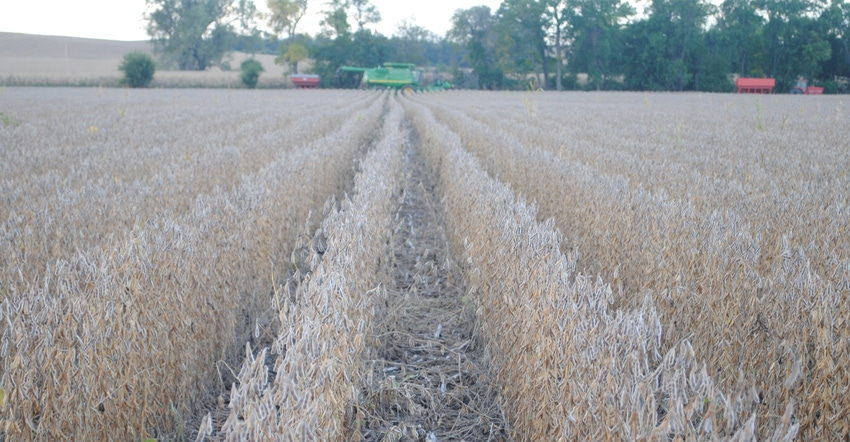November 3, 2021

I am a member of Nebraska LEAD Class 37 and farm in Custer County near Broken Bow with my father and brother. Our operation is about 3,500 acres and includes corn, soybeans, yellow peas, cereal rye, kidney beans and alfalfa.
Through LEAD, I learned the importance of being a leader in the industry to make improvements while representing the interests of producers. To serve the agricultural community, I am a member of the Nebraska Soybean Board and represent District 8 — the western part of the state.
Soybean leader
As a member of the board and a soybean grower, I realize the importance of the commodity to Nebraska’s economy. From 2010-19, soybeans ranked as Nebraska’s top export — generating more than $13.8 billion in export value for the state.
Through NSB, we host international trade missions to bring together trading partners and end users, which helps improve knowledge of Nebraska-grown products and positions the state for continued economic success.
There are many existing markets, in addition to the various developing markets, where time is spent to expand the soybean trade. For instance, Chile is the top market for U.S. consumer-oriented products in South America, so NSB and the USA Poultry and Egg Export Council have promoted U.S. poultry in Chile through a digital consumer program to compete against the local and Brazilian poultry products on the market.
There is also a great opportunity for U.S. soy to spread across markets in the Eastern Hemisphere from sub-Saharan Africa to South Asia. Egypt is another growing market, as it is 50% ahead of last year’s U.S. soybean purchases at more than 67 million bushels.
Feeding fish
Another exciting area of development is in the aquaculture sector, as soy is increasingly being incorporated into the feed ration. Soybeans hold unique, high-value oil quality traits for aquaculture feed. NSB has worked with the University of Nebraska-Lincoln to generate soybean-based aquaculture feedstocks enriched with omega-3 fatty acids and enhanced vitamin E antioxidants to enhance soybean feed value.
This higher-quality feedstock leads to improved fish shelf life, reduces off-flavors or odors, and ultimately, increases consumer demand. This aquaculture and soybean partnership has led to promising economic benefits for Nebraska as a soybean processing plant is being built in Lexington. The Lexington location will produce soy concentrates and isolates for aquaculture consumption domestically and in Spain.
Of course, with all the positives in the soybean trade industry, there are many challenges. COVID-19 continues to present a host of problems. The transportation industry is facing issues as all forms of freight (rail, cargo, containers, etc.) are more expensive and more difficult to obtain.
The Gulf region is still suffering from the effects of Hurricane Ida as well. The bulk of Nebraska’s exported soybeans are shipped through the Pacific Northwest, so recent heavy rains will likely slow shipping from that region’s ports, which are already experiencing significant delays.
Looking into 2022, most of these challenges will persist but should improve. Demand for U.S. soybeans continues to grow and production is soaring, but our industry will continue to face shipping issues.
Being a part of NSB, I am honored to represent Nebraska soybean farmers across the state as we look for ways to increase profitability, explore new markets and support research to help growers with the challenges they face. I am thankful for the Nebraska LEAD program as it helped prepare me to serve on NSB and understand the need to expand our participation in the global marketplace.
Govier is a graduate of LEAD Class 37.
You May Also Like




